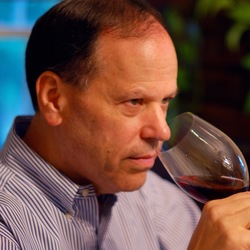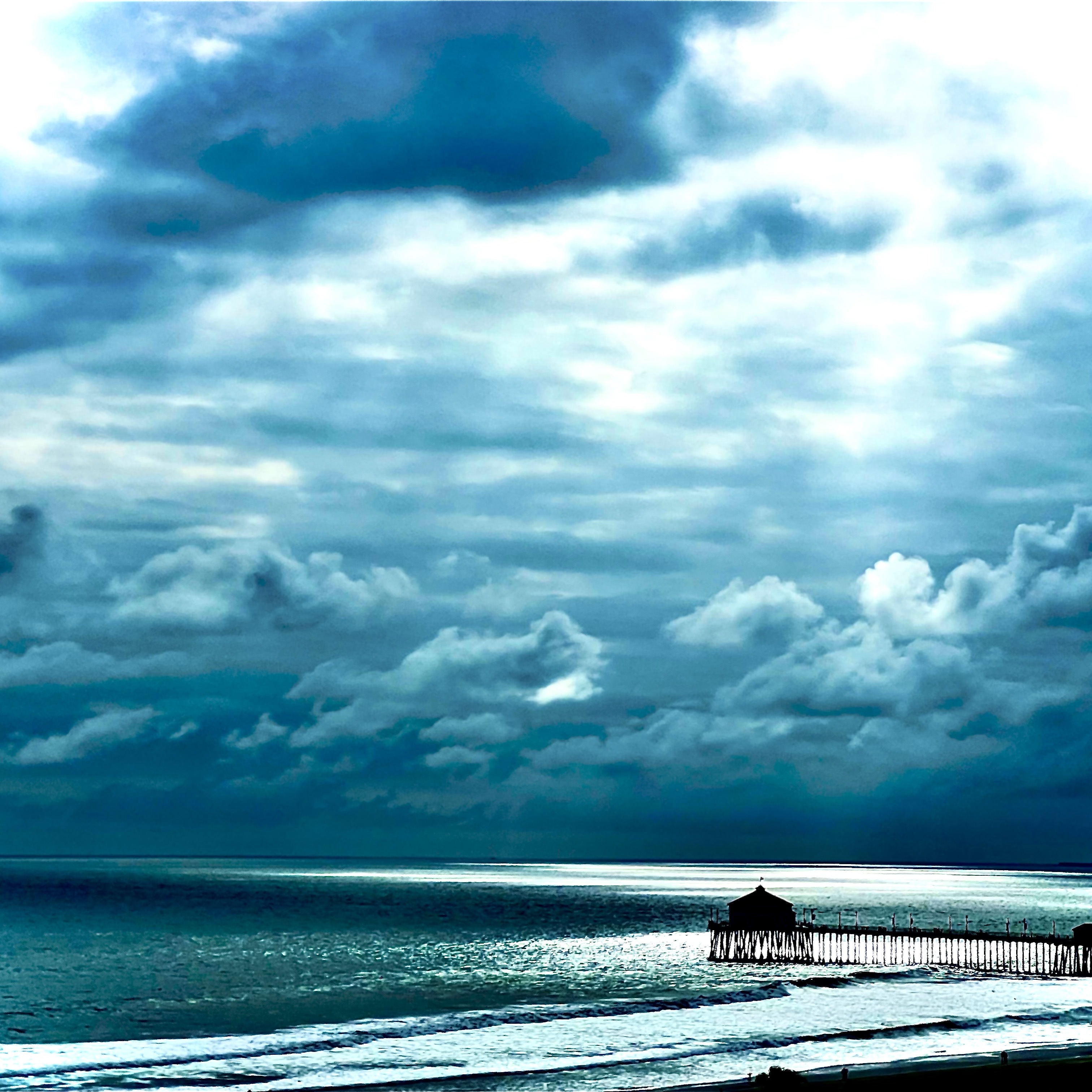Château Pichon Longueville Comtesse De Lalande
Glenelly Estate
Estate Reserve Stellenbosch Red Blend 2014
Located on southern slopes of Simonsberg, owned by May-Eliane de Lencquesaing, former owner of Bordeaux Chateau Pichon Longueville Comtesse. Lemon color with aromas of stone and citrus fruits, adding slight spice. On the palate flavors of ripe apple, pineapple and lemon with nutmeg and smoky toasty notes, full-bodied with medium acidity. Medium+ finish, good balance. Tasting Sample. — 7 years ago
Château Pichon Longueville Comtesse de Lalande
(Nicolas Bottling) Red Bordeaux Blend 1947
JE's Birthday date... Color divine, nose faded but still a good palate. Should have been exceptional but too late.. 69 years later With a "biche terrine aux airelles" handmade. Lovely — 9 years ago
Château Pichon Longueville Comtesse de Lalande
Réserve de la Comtesse Pauillac Red Bordeaux Blend 2022
Vinazo ! Mi nuevo preferido, silky and smooth, redondo, taninos presentes , complejo — 3 months ago
d'Arenberg
The Coppermine Road McLaren Vale Cabernet Sauvignon 2005
I had a few members of the Tasting Group crew join me in a sort of, "help me drink down my cellar" gathering. Everyone had an opportunity to dig through the cellar and select a bottle of their choosing; the identity of the wine was kept from everyone else and then presented double-blind though, since the bottles were being pulled from my cellar, it wasn't a true double-blind situation for me. This was poured into a decanter and served within two hours of opening. The wine poured a deep ruby color, slightly turbid with a nearly opaque core. On the nose, the wine bursting with dark-over-red fruits; black currants and black cherry along with tobacco, bell pepper, leather, coffee, and baking spices. On the palate, the wine was dry and the structure was, overall, quite firm. The fruit set was confirmed and while the wine came across as vinous and fully mature, there was a rather remarkable freshness about it...and almost ageless quality. The tannins and acid were so refreshing. And then there was the texture which, I have to say, was quite noble. It was really hard for me to get away from the Left Bank in Bordeaux, from a great, warmer vintage. The question was: St. Julien or Pauliiac. I called 2000 Pichon Longueville Comtesse de Lalande. I don't hate my call. This was a banger and going back to my notes, I really liked it back then too! It's worth mentioning that the Stelvin enclosure is the real deal folks. This has aged beautifully and has years and years to go. I wish I had more. Alas, this was my last bottle. — 4 years ago
Château Lynch-Bages
Grand Cru Classé Pauillac Cabernet Sauvignon Blend 2000
The 2000 is delicious but, it is evolving at a glacial pace. Out of magnum.
On the nose, touch of barnyard, glycerin, ripe; blackberries, dark cherries, black raspberries, plum, strawberries & cherries. Vanilla, dry clay, limestone, river stones, just a touch of pyrazines & bandaid, dark,,turned, moist earth, dry grass and dry & fresh dark florals.
The body is full, round & sexy. Dry softened, sweet tannins. ripe; blackberries, dark cherries, black raspberries, plum, strawberries & cherries. Vanilla, dry clay, limestone, river stones, just a touch of pyrazines & bandaid, fresh tobacco leaf, saddle-wood, dry underbrush, dark, turned, moist earth, dry grass and dry & fresh dark florals. The acidity is magnificent. The structure, tension, length and balance are sensational. The finish is drop dead gorgeous. I’d still hold mine another 5 years as long as you have 3-4 bottles for more 5 year increments.
Photos of, their Estate vines, Clyde Beffa-Owner of K&L Wine Merchants, Owner of Chateau Lynch Bages - Jean-Michel Cazes, guests of the dinner and a sunset view from their Estate.
Producer notes and history...Lynch Bages takes its name from the local area where the Chateau is located in Bages. The vineyard of what was to become Lynch Bages was established and then expanded by the Dejean family who sold it in 1728 to Pierre Drouillard.
In 1749, Drouillard bequeathed the estate to his daughter Elizabeth, the wife of Thomas Lynch. This is how the estate came to belong to the Lynch family, where it remained for seventy-five years and received the name Lynch Bages. However, it was not always known under that name.
For a while the wines were sold under the name of Jurine Bages. In fact, when the estate was Classified in the 1855 Classification of the Medoc, the wines were selling under the name of Chateau Jurine Bages. That is because the property was owned at the time by a Swiss wine merchant, Sebastien Jurine.
In 1862, the property was sold to the Cayrou brothers who restored the estate’s name to Chateau Lynch family.
Around 1870, Lou Janou Cazes and his wife Angelique were living in Pauillac, close to Chateau Pichon Longueville Baron. It was here that Jean-Charles Cazes, the couple’s second son, was born in 1877.
In the 1930’s, Jean-Charles Cazes, who was already in charge of Les-Ormes-de-Pez in St. Estephe agreed to lease the vines of Lynch Bages. By that time, the Cazes family had history in Bordeaux dating back to the second half of the nineteenth century.
This agreement to take over Lynch Bages was good for both the owner and Jean Charles Cazes. Because, the vineyards had become dilapidated and were in need of expensive replanting, which was too expensive for the owner. However, for Cazes, this represented an opportunity, as he had the time, and the ability to manage Lynch Bages, but he lacked the funds to buy the vineyard.
Jean-Charles Cazes eventually purchased both properties on the eve of the Second World War. Lynch Bages and Les-Ormes-de-Pez have been run by the Cazes family ever since. In 1988, the Cazes family added to their holdings in Bordeaux when they purchased an estate in the Graves region, Chateau Villa Bel Air.
Around 1970, they increased their vineyards with the purchase of Haut-Bages Averous and Saussus. By the late 1990’s their holdings had expanded to nearly 100 hectares! Jean-Michel Cazes who had been employed as an engineer in Paris, joined the wine trade in 1973. In a short time, Jean Michel Cazes modernized everything at Lynch Bages.
He installed a new vat room, insulated the buildings, developing new technologies and equipment, built storage cellars, restored the loading areas and wine storehouses over the next fifteen years. During that time period, Jean Michel Cazes was the unofficial ambassador of not just the Left Bank, but all of Bordeaux. Jean Michel Cazes was one of the first Chateau owners to begin promoting their wine in China back in 1986.
Bages became the first wine sent into space, when a French astronaut carried a bottle of 1975 Lynch Bages with him on the joint American/French space flight!
Beginning in 1987, Jean-Michel Cazes joined the team at the insurance company AXA, who wanted to build an investment portfolio of quality vineyards in the Medoc, Pomerol, Sauternes, Portugal and Hungary.
Jean-Michel Cazes was named the director of the wine division and all the estates including of course, the neighboring, Second Growth, Chateau Pichon Baron.
June 1989 marked the inauguration of the new wine making facilities at Lynch Bages, which was on of their best vintages. 1989 also marked the debut of the Cordeillan- hotel and restaurant where Sofia and I had one of our best dinners ever. A few years after that, the Village de Bages with its shops was born.
The following year, in 1990, the estate began making white wine, Blanc de Lynch Bages. In 2001, the Cazes family company bought vineyards in the Rhone Valley in the Languedoc appellation, as well as in Australia and Portugal. They added to their holdings a few years later when they purchased a vineyard in Chateauneuf du Pape.
In 2006, Jean-Charles Cazes took over as the managing director of Chateau Lynch Bages. Jean-Michel Cazes continues to lead the wine and tourism division of the family’s activities. Due to their constant promotion in the Asian market, Chateau Lynch Bages remains one of the strongest brands in the Asian market, especially in China.
In 2017, Chateau Lynch Bages began a massive renovation and modernization, focusing on their wine making, and technical facilities. The project, headed by the noted architects Chien Chung Pei and Li Chung Pei, the sons of the famous architect that designed the glass pyramid for the Louvre in Paris as well as several other important buildings.
The project will be completed in 2019. This includes a new grape, reception center, gravity flow wine cellar and the vat rooms, which will house at least, 80 stainless steel vats in various sizes allowing for parcel by parcel vinification.
The new cellars will feature a glass roof, terraces with 360 degree views and completely modernized reception areas and offices. They are not seeing visitors until it’s completion.
In March, 2017, they purchased Chateau Haut Batailley from Françoise Des Brest Borie giving the Cazes family over 120 hectares of vines in Pauillac!
The 100 hectare vineyard of Lynch Bages is planted to 75% Cabernet Sauvignon, 17% Merlot, 6% Cabernet Franc and 2% Petit Verdot. The vineyard has a terroir of gravel, chalk and sand soils.
The vineyard can be divided into two main sections, with a large portion of the vines being planted close to the Chateau on the Bages plateau. At their peak, the vineyard reaches an elevation of 20 meters. The other section of the vineyard lies further north, with its key terroir placed on the Monferan plateau.
They also own vines in the far southwest of the appellation, next Chateau Pichon Lalande, on the St. Julien border, which can be used in the Grand Vin. The vineyard can be split into four main blocks, which can be further subdivided into 140 separate parcels.
The average age of the vines is about 30 years old. But they have old vines, some of which are close to 90 years old.
The vineyards are planted to a vine density of 9,000 vines per hectare. The average age of the vines is about 30 years old. But they have old vines, some of which are close to 90 years old.
Lynch Bages also six hectares of vine are reserved for the production of the white Bordeaux wine of Chateau Lynch Bages. Those vines are located to the west of the estate. They are planted to 53% Sauvignon Blanc, 32% Semillon and 15% Muscadelle. On average, those vines are about 20 years of age. Lynch Bages Blanc made its debut in 1990.
To produce the wine of Chateau Lynch Bages, vinification takes place 35 stainless steel vats that vary in size. Malolactic fermentation takes place in a combination of 30% French, oak barrels with the remainder taking place in tank.
The wine of Chateau Lynch Bages is aged in an average of 70% new, French oak barrels for between 12 and 15 months. Due to the appellation laws of Pauillac, the wine is sold as a generic AOC Bordeaux Blanc, because Pauillac does not allow for the plantings of white wine grapes.
For the vinification of their white, Bordeaux wine, Blanc de Lynch-Bages is vinified in a combination of 50% new, French oak barrels, 20% in one year old barrels and the remaining 30% is vinified in vats. The wine is aged on its lees for at least six months. The white wine is sold an AOC Bordeaux wine.
The annual production at Lynch Bages is close to 35,000 cases depending on the vintage.
The also make a 2nd wine, which was previously known as Chateau Chateau Haut Bages Averous. However, the estate changed its name to Echo de Lynch Bages beginning with the 2007 vintage. The estate recently added a third wine, Pauillac de Lynch-Bages.
— 8 years ago


Château Pichon Longueville Comtesse de Lalande
Réserve Pauillac Red Bordeaux Blend 2024
Very nice stony minerality. Very lean and precise. It’ll improve with time.
Wonderful wine. — 8 months ago
Château de Pez
Saint-Estèphe Cabernet Franc Blend 2016
Just too young obviously,an experiment since we had an 08 Bordeaux yesterday.
Spectator 92,
Other reviews,
Decanter Magazine Review
Rated 94
Another bargain alert! At this price level, perhaps the most subtle and elegant of all wines tasted. Not as expressive as Ormes de Pez, but top marks for delicate refinement and indeed a noticeably floral aromatic profile that accentuates the palate. As wine consultant Kevin Gagnon noted at a tasting: Finesse and great length.' Do not hesitate. Drink now-2035.
Wine Enthusiast Review
Rated 93
One of the many estates on the Pez plateau in Saint-Estèphe, this property is at the top of its game. Owned by the same proprietors as Pichon Longueville Comtesse de Lalande, the wine has structure, big tannins as well as dense black fruits. Drink from 2024.
Wine Tasting Notes
The vintage is dense in color, retaining a purplish-blue hint typical of wines that are slow to develop. The slightly toasty nose has plenty of red- and black- berry fruit and a hint of jamminess mingled with aromas of spice and tobacco. The nose is what you would expect of a wine made from very ripe grapes. It is already deliciously complex. The palate is entirely consistent with the nose. The attack is still firm at this stage but developing in a manner that instantly suggests an opulent wine. Good, well-rounded substance lingers elegantly on the palate, with silky tannins and not a trace of harshness. This is truly an exceptional wine: thoroughbred, elegant and rich. — 4 years ago
Château Pichon-Longueville Baron
Baron de Pichon-Longueville Pauillac Red Bordeaux Blend 2004
I have to say this is my favorite Chateau to stand in front of and gaze. On the nose, spice, wild blackberries, dark cherries, blueberries, black plum, plum, leather, cedar, dark moist soil, wet stones, mint, tobacco leaf and dark fresh & dry flowers. It's drinking nicely with silty medium-medium + tannins & full bodied. Ruby, ripe wild blackberries, dark cherries, blueberries, black plum, plum, leather, cedar, dark moist soil, wet stones, crushed dry minerals, mint, tobacco leaf and violets, dark fresh & dry flowers. The acidity is round and mouthwatering. The long finish has great elegance, beauty, length, tension & balance. It's just starting to hit it's stride and has plenty of life ahead of it. Another 15-20 years. Who said 04 was a difficult vintage? This will continue to improve and will stun with another 10 years in bottle. Photos of the the exterior Chateau front & side, tasting room and Christian Seely Managing Director. Chateau Pichon Baron and Chateau Pichon Lalande were originally part of the same estate. Pichon Baron got it's name when Therese, daughter of the founder, received the estate as a dowry when she married Jacques de Pichon Longueville the first President of the Bordeaux Parliament. Chateau Pichon Baron changed because of the Baron Joseph de Pichon Longueville. He took over managing Pichon Baron when he was only 19 years old! When the Baron passed away at 90 in 1850, he divided his Pauillac estate. The sons were awarded what became Chateau Pichon Baron and the daughters were given what later became Chateau Pichon Lalande. Pichon Baron went through three rough decades in the 60's, 70's and 80's. Part of the issues were, lack of investment and they machine harvested. The first really great vintages for them were 89 & 90 after Jean Rene Matignon, Jean-Michel Cazes join them and AXA Insurance Company purchased them adding capital. The 73 hectare vineyard of Chateau Pichon Baron are planted to 65% Cabernet Sauvignon, 30% Merlot, 3% Cabernet Franc and 2% Petit Verdot. However, the Cabernet Franc and the Petit Verdot are reserved exclusively for the second wine. The terroir is mostly deep gravel, sand clay soils. Pichon Baron uses 80% new French oak and rests in barrel 18 months. @ FogoDeChao
— 8 years ago














GaryWEdwards
A wonderful expression of Merlot primarily that ticks all the boxes- cigar, dark berry and earthy roots. Brilliant — a month ago